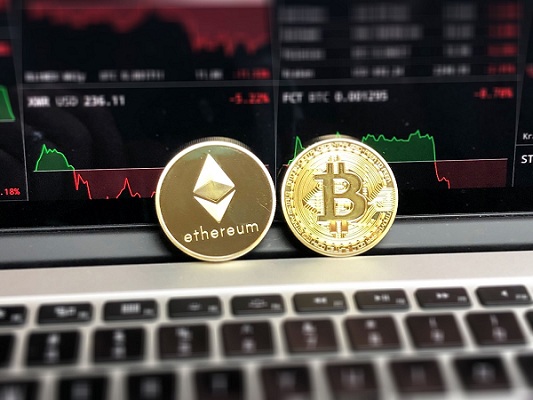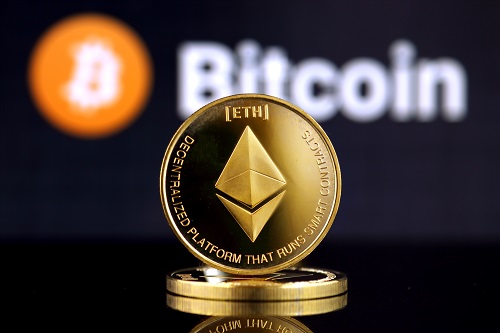Altsignals (ASI), Bitcoin (BTC), Ethereum (ETH) price predictions

Bitcoin (BTC) eyes $80K amid institutional FOMO & strong hodling. Ethereum (ETH) bullish, targets $4,868 ATH with robust technicals. AltSignals (ASI) set a new ATH at of $0.006026. In the fast-paced world of cryptocurrency trading, accurate price predictions are highly sought after by investors looking to make informed decisions. Today, we delve into the latest […]
Bitcoin (BTC) and Ethereum (ETH) lead the bull rally; Rebel Satoshi ($RBLZ) finally concludes presale event

Top experts expect Bitcoin’s (BTC) price to rise beyond $70,000 as halving approaches. Ethereum (ETH) proposal causes optimism among investors, who expect a surge in the DeFi coin price to $5,000 by the end of March. Rebel Satoshi ($RBLZ) presale has concluded. Despite BTC and ETH’s continued rise to the top of the cryptocurrency market during this recent upswing, a new competitor has […]
Ethereum and Bitcoin drive crypto market surge; Pullix PLX token presale nears end

Ethereum (ETH) surged above $3400, driven by Bitcoin’s rise. Pullix pre-sale ending soon; PLX to list on Uniswap, BitMart. Investors eying Ethereum (ETH) and Pullix (PLX) amid the bullish crypto market. The cryptocurrency market is experiencing a significant surge, propelled by impressive gains in Ethereum (ETH) and Bitcoin (BTC). Ethereum has seen a remarkable increase […]
Missed Bitcoin and Ethereum waves? NuggetRush unveils new generation NFT gaming rewards

Bitcoin jumps amid rising demand for spot BTC ETFs. Ethereum’s investor sentiment could rise following excitement around its March 13 upgrades. NuggetRush (NUGX) unveils a gaming community where ambitious investors can win gold rewards. Spot BTC ETF inflows have skyrocketed to over $2.1 billion pushing Bitocin price higher as Ethereum on the other hand gears up […]
Institutional traders favour Bitcoin and Ethereum while whales eye this new AI crypto

In the crypto world, there’s a noticeable shift in how big investors are playing the game. Institutional traders are increasingly leaning towards Bitcoin and Ethereum as safer choices, as shown by a recent Bybit Research report. Meanwhile, the big players, or ‘whales’, are getting more interested in a new AI cryptocurrency ICO, signalling a change […]
New altcoin outshining Ethereum and Shiba Inu as Morgan Stanley calls crypto winter end

Morgan Stanley Wealth Management has called the end of the extended crypto bear market, indicating that the crypto spring is on the horizon. The crypto market has been projected to rally to a new high in this new bull market. Ethereum and Shiba Inu have already recorded significant gains as the crypto market enters a […]
Grayscale files to convert its Ethereum Trust into a spot Ethereum ETF

Grayscale is seeking for SEC’s approval to convert its Ethereum Trust to an Ethereum ETF. Grayscale’s Ethereum Trust manages nearly $5 billion in Ethereum assets. Transition to spot ETF offers direct and regulated cryptocurrency exposure. Grayscale Investments, a global leader in digital asset investment, is making headlines again as it seeks approval from the US […]
Why is Ethereum outperforming Bitcoin since the Merge?

Key Takeaways Ever since the Merge went live in September, Ether has underperformed Bitcoin significantly This is despite the supply of Ethereum falling post-Merge More Ether is also being staked since the Shapella upgrade in April Demand has fallen with regard to Bitcoin, however, overriding the lower supply Regulatory crackdown and greater institutional interest in […]
Helium surges as Bitcoin and Ethereum hover at key levels

Helium rose double digits as did 1inch and NEM after US inflation data Bitcoin price on the other hand touched $31k on Coinbase and Ethereum hovered near $1.9k. Consumer prices rose 0.2% month-over-month and 3% year-over-year in June. Bitcoin moved slightly higher on Wednesday after stock markets reacted positively to the latest US inflation data. […]
Ordinals and enterprise adoption drove network revenues for Bitcoin and Ethereum in May: Report

Bitcoin revenue jumped 249% YoY in May, while Ethereum network fees rose 53.7% in May, according to a research report by the ETC Group. Ordinals and enterprise adoption drove network revenues for Bitcoin and Ethereum respectively. Regulation and macroeconomics remain key factors even as benefits of tokenisation attracts major banks. The current market outlook for […]